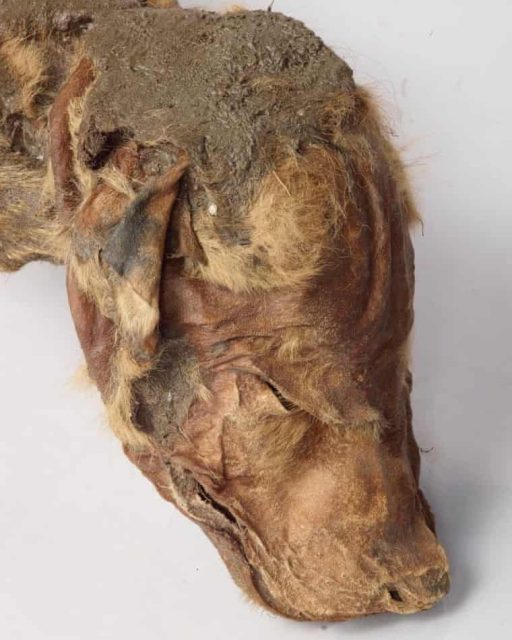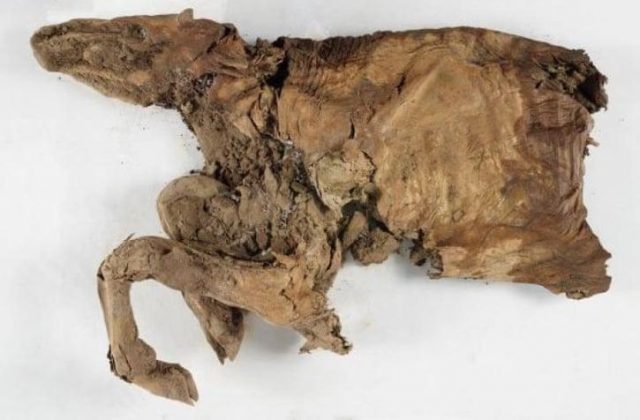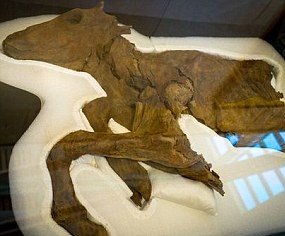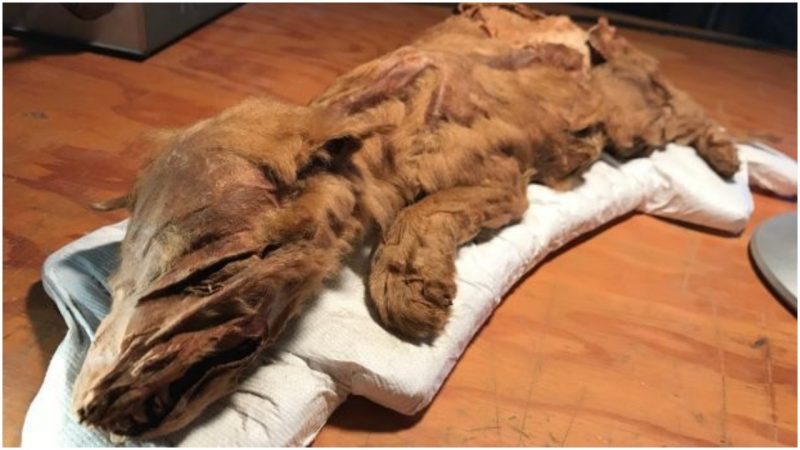Canada’s Klondike has yielded an amazing discovery: the mummified remains of a wolf puppy and part of a caribou, with fur and tissue still intact. They are believed to have lived more than 50,000 years ago.
This was not a scientific dig. Gold miners found the remains by accident. The region, once the scene of a late 19th century frenzied gold rush, is still being mined.

The CBC has reported that the specimen was found at a placer gold mine owned by Tony Beets, who’s known for appearances on the reality TV show Gold Rush.
“The ancient Ice Age specimens, both radiocarbon dated to over 50,000 years old, were discovered and reported by placer mining operations in the Klondike region and recovered by members of the Yukon Paleontology Program for research and analysis,” according to a Canadian government statement released in mid-September 2018.

“Remarkably well-preserved, with hair, skin and muscle tissue intact, specimens of this quality are extremely rare and have garnered a great deal of international scientific interest,” the statement continued. “These world-class finds shed light on Yukon’s fascinating ice age history and will help us understand how these long gone creatures lived in the environment they inhabited.”
Researchers say it’s rare to find for fur, skin, and muscle tissues preserved in this way.
Elsa Panciroli, a paleontologist at the University of Edinburgh, told the Guardian: “Ice Age wolf bones are relatively common in the Yukon, but having an animal preserved with skin and fur is just exceptional … It’s an evocative glimpse into the Ice Age world.”

Some 50,000 years ago, the region was a freezing tundra. Long-extinct animals, such as woolly mammoths and western camels, roamed as well as mammals whose descendants populate the Arctic territories today.
The CBC reported that the remains were found in an area that includes an 80,000-year-old volcanic ash bed.

“These are ashes that are found in the permafrost from volcanoes in Alaska that erupted during the ice age,” said Yukon government paleontologist Grant Zazula. “We think this is some of the oldest mummified soft tissue in the entire world.”
Both of the specimens have been accepted by the Canadian Conservation Institute. The mummified animals are now on display at the Dänojà Zho Cultural Centre in Dawson City, where they’ll stay for the rest of September.
The Yukon government says the specimens will be incorporated into an exhibit at the Beringia Interpretive Centre in Whitehorse.

About 30 years ago, miners uncovered the remains a 26,000-year-old Yukon horse, but as Zazula tells the Canadian Press, no significant soft-tissue specimens had emerged since.
“We sometimes get jealous because in Siberia, … it seems like they find a new woolly mammoth carcass every summer,” Zazula says. “But we never seem to find those in the Yukon or Alaska.”
This summer, the perfectly preserved remains of a 40,000-year-old foal were discovered by a team of scientists who were searching the melting permafrost of Siberia for evidence of the ancient woolly mammoths.
The mummified foal, which is about 37 inches tall, was so well-preserved that the skin, the tail, the hooves, and even the hairs in the animal’s nostrils and around its hooves are were visible.
https://www.youtube.com/watch?v=kR0TzxZiOZI
The foal was found during an expedition to the Verkhoyansk district of Yakutia and was dug up from its grave which was about 100 feet beneath the original surface of the depression.
Read another story from us: Extinct Predator Cave Lions Could be Brought Back to Life
The discovery was made by a team working inside the Batagai depression, a massive thermokarst crater that is nicknamed “the Mouth of Hell.” Locals in the Yakutia region see this crater as superstitious, and regard it as the gateway to the underworld.
Nancy Bilyeau, a former staff editor at Entertainment Weekly, Rolling Stone, and InStyle, has written a trilogy of historical thrillers for Touchstone Books. For more information, go to www.nancybilyeau.com.
